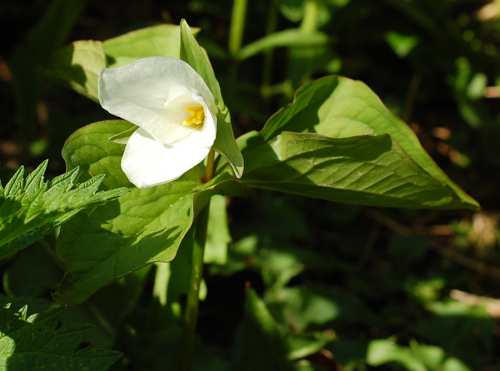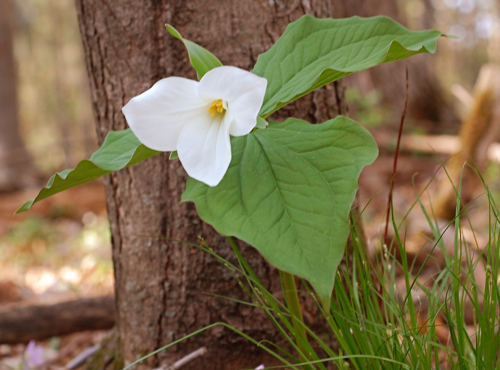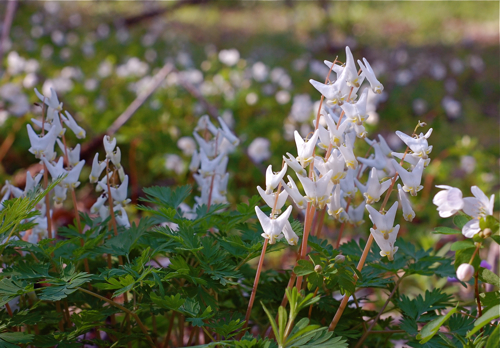I signed on for a book project last December thinking that this is Minnesota and an early April deadline will be a great way for me to occupy my time. Then warm temperatures came early, leaves started bursting and survey work rolled in sooner than expected. Before I knew it, my body was chained to my book and computer and I could only glare enviously at friends posts on Facebook and Twitter as they were enjoying birds.

Sure, I had some of my field work, but trying not to throw up from the back of a float plane while counting eagle nests is not the same as a bird walk through the woods. Although, I did get a kick out of a great horned owl that took over one of my park's eagle nests--that's a ballsy move, but that's a great horned owl for you.
But finally, through a scheduling snafu, I ended up with two days off in a row and in the middle of all of that, we got word that our three new beehives would arrive. Time to relish spring and not just go through the motions of spring chores.

I was worried with all the warm weather that I might have missed my chance to see wildflowers but on bee installation day the surrounding woods was carpeted with rue anemone and I found myself in a quandary--what do I focus on for the day? Wildflowers? Birds? Bees? I tried my best to do all three. What a bonus to have a day off and get so much spring all at once.

Here's a transition of winter to spring. A pine siskin and a female goldfinch. One bird that came down to feed for the winter and the other gradually shifting into a bit brighter yellow plumage for the coming breeding season.

Up in the northern US we don't have the warbler extravaganza those south of us have going on but we do have the early ones like the yellow-rumped warblers.

But even as there are birds overhead, there are secretive and unique beauties down below. There's a patch of wild ginger near the hives and they hide there flowers below their two leaves.

What an amazing tiny flower, so hidden on the woods floor.

Our bees that survived the winter are thriving in the early spring. Bees with big fat pollen baskets strapped to their back legs returning. And the pollen is in several different colors. I think most are coming back with dandelion pollen but others are foraging on flowering fruit trees. One of the hives was so full, we went ahead an put on a honey super. Lilac are just starting and I'm kind of hoping we'll get honey that has a bit of that flower. That happened a few years ago and I think it was my favorite.
We did our annual bee installation and put in three new hives, so combined with the three that survived the winter, we now have a total of six hives. As we were doing the installation, someone came by with a high speed camera and got footage of Neil dumping the bees into the hive. I love how the video almost makes Neil look like he's not moving while bees glitter all around him. Here it is:
[vimeo]http://vimeo.com/40830178[/vimeo]
So all in all some great time off. And for my mom, here are a few more wildflower photos from around the hive:

Trout lily.

Trillium.

Dutchman's breeches.

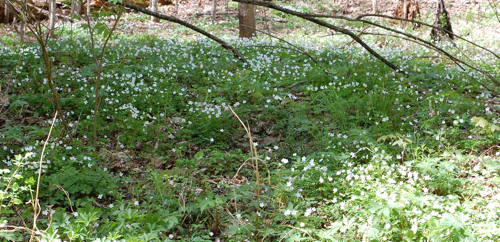 I mentioned earlier that the wildflowers seemed to be going gangbusters this year around our bee yard--perhaps it's a matter of me exploring an area around our bee yard that I usually do not get around to visiting? They are in an area outside of
I mentioned earlier that the wildflowers seemed to be going gangbusters this year around our bee yard--perhaps it's a matter of me exploring an area around our bee yard that I usually do not get around to visiting? They are in an area outside of 












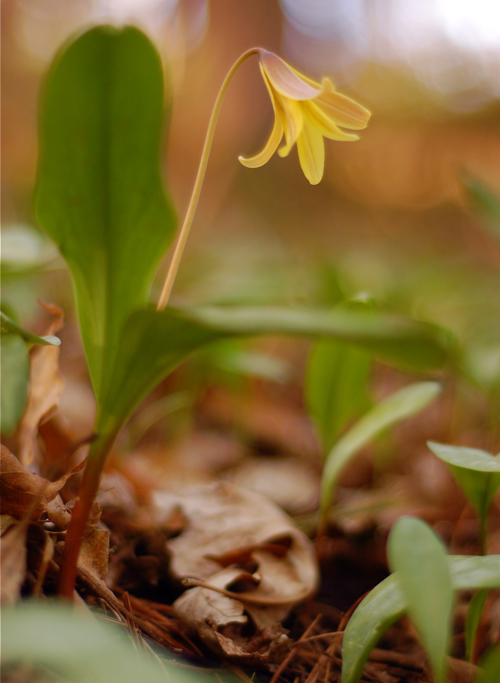 I'm going to have to park myself at my beehives at some point next week. So many native wildflowers are about to erupt. Many are already blooming but there were several sprouting yesterday. If it's sunny the first part of next week...the woods will be dominated by these delicate and brave first flowers of the spring like this trout-lily (so named because the spots on the leaves resemble the coloring of a trout.
I'm going to have to park myself at my beehives at some point next week. So many native wildflowers are about to erupt. Many are already blooming but there were several sprouting yesterday. If it's sunny the first part of next week...the woods will be dominated by these delicate and brave first flowers of the spring like this trout-lily (so named because the spots on the leaves resemble the coloring of a trout.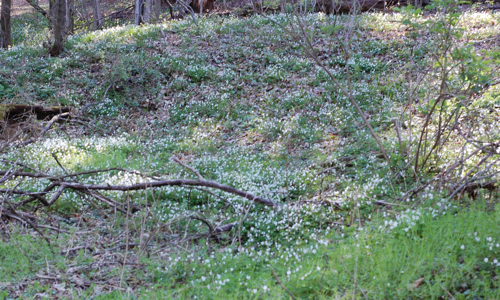 This spring has been spectacular for wildflowers and the woods around the beehives are covered in them. We've planted some natives and a two years ago, I bought some clearance large-flowered trillium to add in. I was inspired to encourage more near Mr. Neil's house because you can find
This spring has been spectacular for wildflowers and the woods around the beehives are covered in them. We've planted some natives and a two years ago, I bought some clearance large-flowered trillium to add in. I was inspired to encourage more near Mr. Neil's house because you can find 